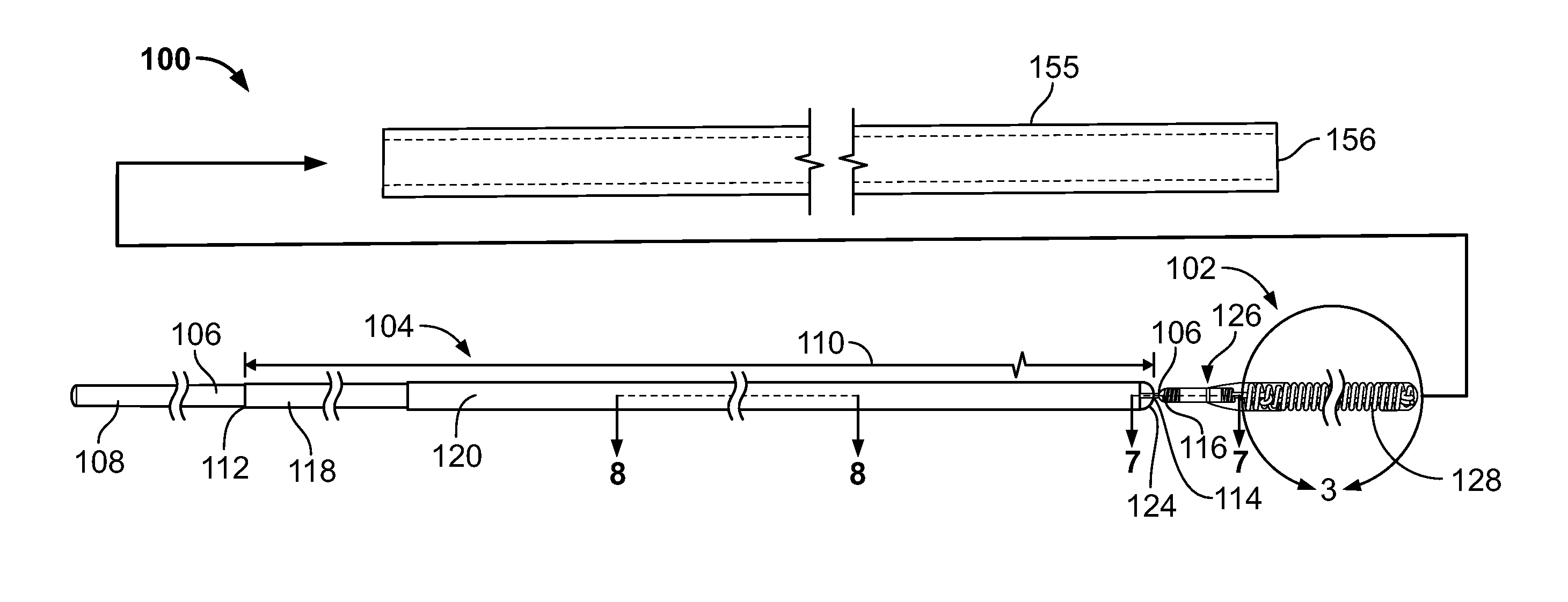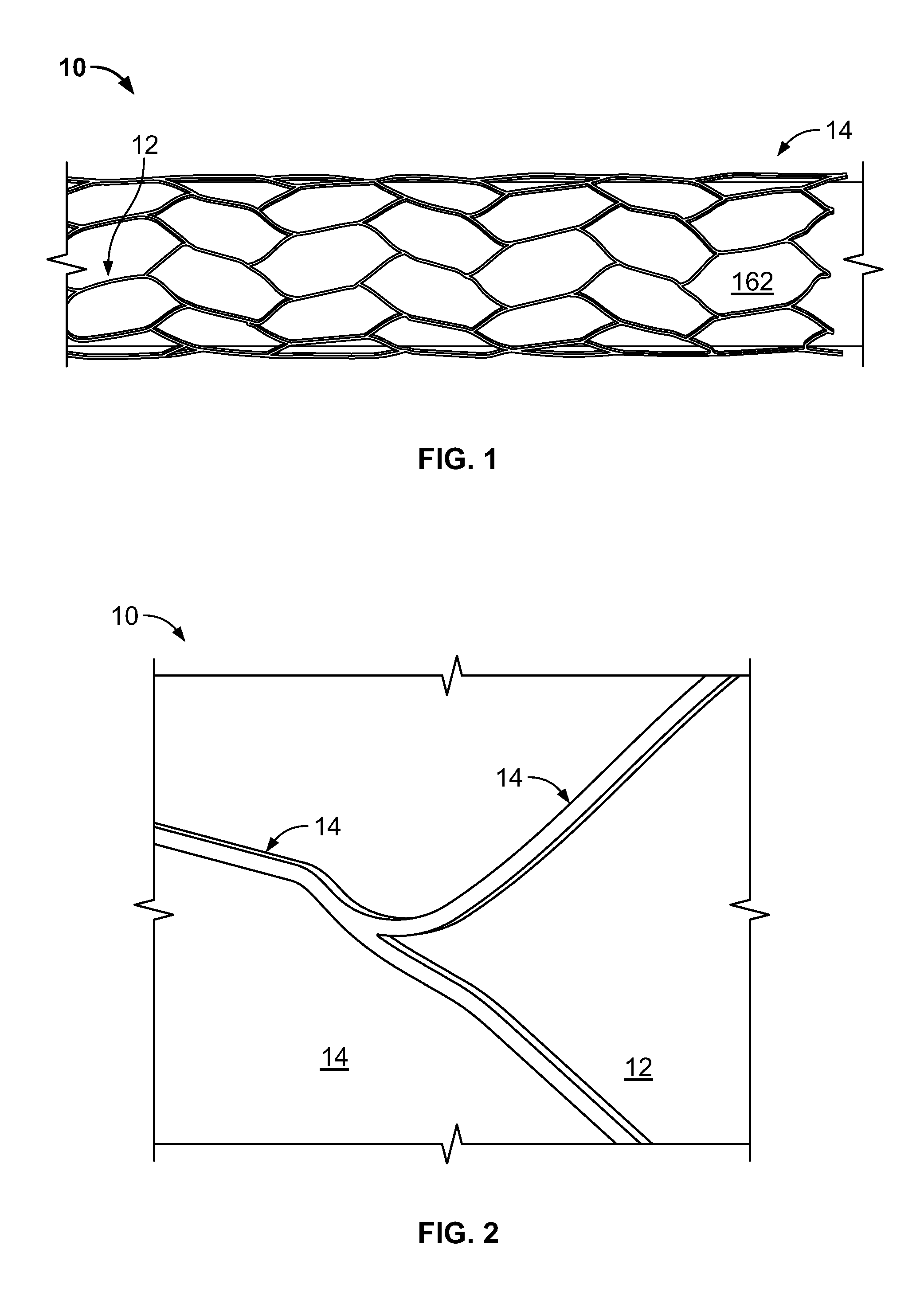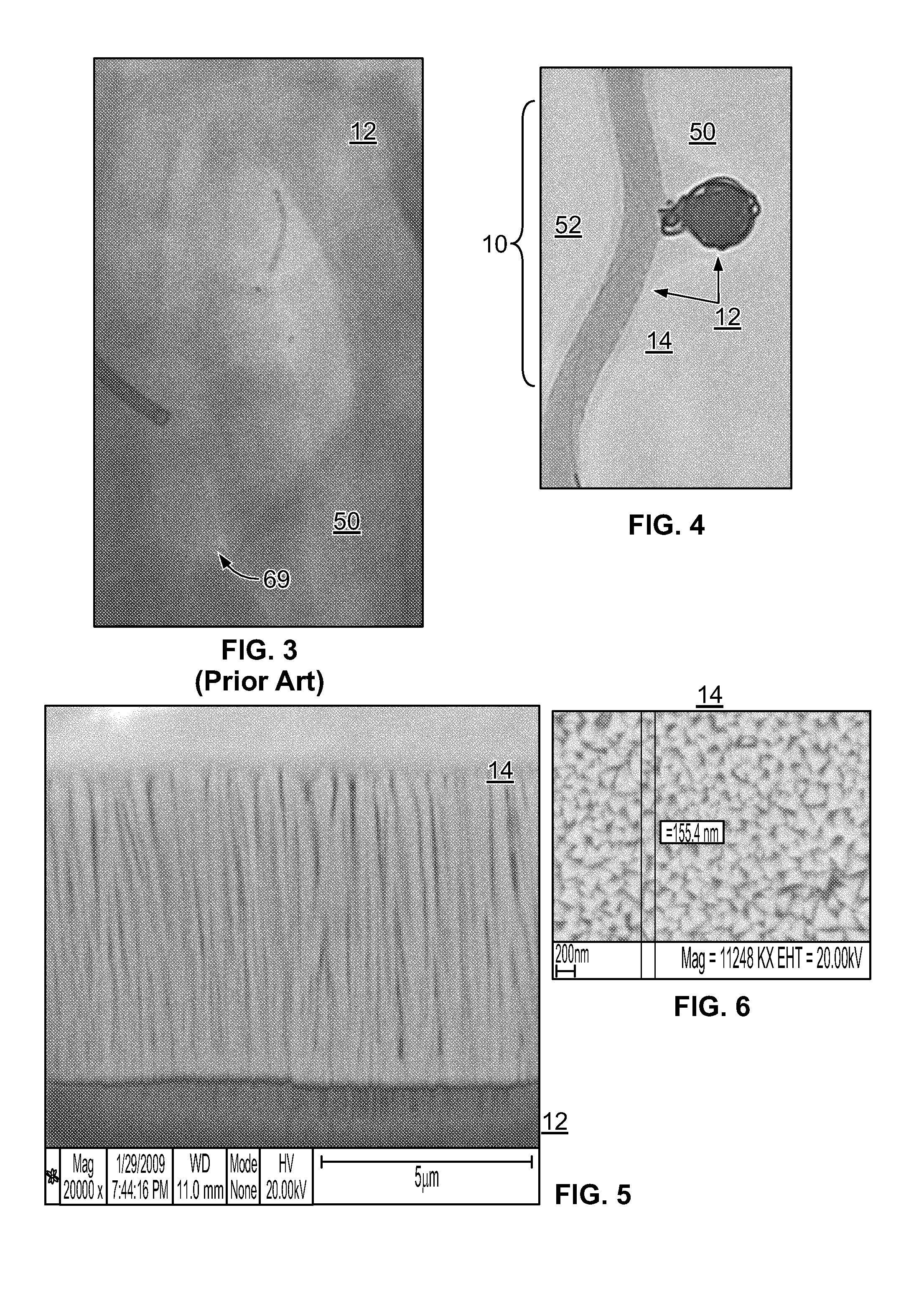Systems and devices for cerebral aneurysm repair
a technology for cerebral aneurysms and systems, applied in the field of cerebral aneurysm repair systems and devices, can solve the problems of sub-arachnoid hemorrhage patients, risk of initiating an ischemic event during balloon remodeling, and flow arrest, so as to promote device stability, promote device stability, and increase the adhesion of the device
- Summary
- Abstract
- Description
- Claims
- Application Information
AI Technical Summary
Benefits of technology
Problems solved by technology
Method used
Image
Examples
Embodiment Construction
[0032]The inventor has discovered that embolization devices with improved implantation characteristics, and especially with improved radiopacity, retention of implants and / or biocompatibility, can be prepared by inclusion of a radiopaque, electropositive surface on the device, wherein the surface is sufficiently electropositive such that the surface ionically binds one or more physiologic components in an amount effective to promote stability of physiologic components in the artery, aneurysm or vesicle, or to bind to a tissue component in an amount effective to increase adhesion of the device as compared to a corresponding device without radiopaque, electropositive surface. While not limiting to the inventive subject matter, it is especially preferred that the radiopaque, electropositive surface is provided by a radiopaque, electropositive metal that is coupled to the body of the embolization device.
[0033]FIG. 1 and FIG. 2 provide exemplary illustrations of the inventive subject mat...
PUM
| Property | Measurement | Unit |
|---|---|---|
| current | aaaaa | aaaaa |
| current | aaaaa | aaaaa |
| voltage | aaaaa | aaaaa |
Abstract
Description
Claims
Application Information
 Login to View More
Login to View More - R&D
- Intellectual Property
- Life Sciences
- Materials
- Tech Scout
- Unparalleled Data Quality
- Higher Quality Content
- 60% Fewer Hallucinations
Browse by: Latest US Patents, China's latest patents, Technical Efficacy Thesaurus, Application Domain, Technology Topic, Popular Technical Reports.
© 2025 PatSnap. All rights reserved.Legal|Privacy policy|Modern Slavery Act Transparency Statement|Sitemap|About US| Contact US: help@patsnap.com



